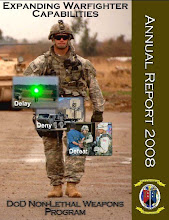It seems only appropriate to take exception to the false, wrongful and egregious statements of the Dishonorable Peter B. Lyons on issues of security that he delivered at the 21st Annual Regulatory Information Conference held on March 10, 2009. It's appropriate, as again this year when the Commissioners had opportunity to side with human health and public safety in strengthening the DBT (Design Basis Threat), the commissioners ended up in a 2-2 tie, which amounts to voting in favor of their licensees, even though that vote has needlessly and wrongfully placed Host Communities here in America at grave risk.
For ease of separation, my comments have been interspersed with Peter Lyon's statements, mine appearing in red. It is time that National Security take a front seat to corporate nuclear profits...we have learned that much in the melt down of both Wall Street, and the Banking Industry, the governments inept enforcement failures never more noticeable than the Financial Nuclear Explosion at AIG that has devastated communities across America, wrecking our economy, ruining the retirement opportunities for tens of millions in the Boomer Generation.
Sadly, the NRC's incestuous relationship with the industry through NEI, the Commissioners own financial inbreeding with the nuclear industry (many within the NRC hold stock/investments in various companies and/or funds that are tied to the nuclear industry and the people they are supposed to be policing) they have taken an oath to protect us against has put every reactor community in America in grave risk of suffering a fate far worse than the collapse of our economy visited upon 12.5 million Main Street Americans. It is imperative that Obama demand investigations, and where appropriate, bring criminal charges against at least two board members on the commission. Since the NRC's own Office of Inspector General seems to have become corrupt, I am calling on Congress to name a Special Prosecutor to carry out a full and complete criminal investigation of the NRC, NEI and EPRI, and if possible give said investigator authorization to broaden the investigation to include both the DOE and the DOD.
“Building for the Future in a Time of Change”
The Honorable Peter B. Lyons
Commissioner
U.S. Nuclear Regulatory Commission
21st Annual Regulatory Information Conference
March 10, 2009
Nuclear Reactor Security (Peter's Entire Speech)
In response to the events of 9/11, the last several years have witnessed an increased focus on the security of nuclear reactors as well as the secure use of nuclear materials. With all due respect Commissioner Peter's, not sure giving lip service to nuclear reactor security issues since 9/11 is the same as what you falsely allege in stating, "...an increased focus on the security of nuclear reactors...". There are specific examples where the NRC, where the Commissioners have gone against their own staff recommendations, gone against findings of the FBI and the Department of Homeland Security, have actually weakened the DBT to a point where it provides fewer protections than we as a host community were afforded before 9/11. Over the last four years, the force-on-force program has progressed well, as all the parties – from licensees, to the adversary force, to the NRC – have learned and improved their responses. Again exception is taken...first, every single Reactor Host Community and various stakeholders within those community have objected to numerous inadequacies in the DBT, taken exception with the way the force on force exercises are run. Most importantly, we have objected to a DBT and Force on Force exercises designed to assure passing grades are received at every licensed reactor site, regardless of the known significant security problems that exist at most sites...sleeping guards, over worked security personnel (due to a WORSENING qualified worker shortage that has reached epidemic proportions in the industry, and at NRC Headquarters as well...the average worker or guard at a nuclear reactor site is putting in a SEVENTY HOUR WORK WEEK each and every single week of the year, vacation times often being discouraged) and breachable outer security perimeters that can easily be breached by terrorist. The role played by active duty Special Operations Forces personnel has been vital in development of scenarios and evaluation of the adversary force. While I had great skepticism with the decision made before my arrival to have the Nuclear Energy Institute, or NEI, hire the Composite Adversary Force or CAF, my personal observations of the results of this arrangement have convinced me that the NRC, with the help of those extremely dedicated Special Operations Forces personnel, has complete control of the vital attributes of the exercises. I shall simply say this about the conflict of interest that exists in letting the nuclear industry's lobbyist put together the Force on Force teams, and I say it in the form of a formal allegation...on good authority, it is my belief that some if not all NEI Composite Adversary Force members were brought up to the NEI from the security forces at Nuclear Reactor facilities, and their paychecks are being written out on the accounts of reactor licensees. More importantly, it has been stated within the Stakeholder Community that one two Commissioners are aware of the fact that Force on Force Team Members are being paid by their licensees. Though this cannot be validated, looking at the 2-2 vote, it does not take a rocket scientist to figure out who VOTED IN FAVOR OF THE LICENSEES, IN FAVOR OF A DANGEROUSLY WATERED DOWN DBT.
Thus, when the Commission considered alternatives to the NEI CAF contract, I felt comfortable continuing the previous arrangement, as opposed to bringing the CAF function into the agency. I would ask Mr. Lyons where his level of comfort comes from if he truly takes his oath to protect human health and the environment serriously. You are fine with the conflict of interest that exists in your licensees lobbyist TESTTING THEM? You are comfortable knowing licensees are paying the salaries of the Force On Force team members? You are comfortabgle knowing that Force On Force Team members have come up from the ranks, and are close friends with the people they are going to be testing...we have heard NUMEROUS REPORTS that guards are getting calls at their homes affording them A HEADS UP. A large part of my decision was based on my recognition that the NRC really is not an ideal home for the CAF. As a practical matter, the NRC is not well positioned to rotate a licensee’s personnel on and off the CAF. NEI, on the other hand, is able to work with licensees to rotate guards from various sites onto the CAF and then back to the sites. It is pointed out here, that this above sentence actually PROVES THE ALLEGATIONS that I am making. My decision was strongly influenced by the recognition that when personnel move from the CAF back to a site, they are returning with new knowledge and perspectives that further improve site security. They are returning with a CHEAT SHEET, have been given the answers to the test to share with their fellow members of the Security Team when they return to their home reactor site.
The NRC’s Design Basis Threat, or DBT, also underwent several modifications during my tenure. I’ve noted before, that because we face an evolving threat, I don’t believe the Commission can ever guarantee a constant DBT. We are not asking for a CONSTANT DBT, but one that keeps us safe. As one example, it is pointed out, that before 9/11 occurred, the DBT required protection against a explosvie laden truck the size of the one used in the first WTC Terrorist attack. However, after 9/11 when your licensee's found out they could not protect their reactors from said explosives laden truck, the explosive laden truck was reduced down in size to a SMALL SUV. However, we can and should assure that any proposed changes are studied in a careful and consistent process. To that end, the Commission supported a procedure that enables staff analysis of intelligence information to inform any potential changes to the DBT. The staff follows a rigorous examination of any new potential attribute, which includes evaluation of the extent to which an element of the integrated capabilities of our local, state, or federal authorities is already working to address a specific threat. This sounds impressive in a delivered Speech Mr. Lyons, but is completely opposite of the on the ground reality at the NRC...on too many occassions, after PRIVATE MEETINGS WITH NEI and YOUR LICENSEES, you have gone against the recommendations of your staff that so deligently studied the situation , so carefully made their recommendations in the best interest of human health and public safety. Again, as example I offer the case of the high powered 50 caliber rifle that your staff said should in the DBT (along with an extensive list of other weapons that the FBI, DHS and various law enforcement agencies said were easily attainable). The Commissioners after PRIVATE CONSULTATON with the NEI who argued COST, the DBT was GUTTED. It is pointed out here, that the primary reason the 50 Caliber was removed from the list was almost all reactor sites and their guard towers and control rooms have Bullet Resistent Glass, and inclusion of the 50 Caliber Rifle would have required them to install BULLET PROOF GLASS. Interesting enough, and cited as proof of the Commissioners illegal activities, it is pointed out that the reason given for taking this weapon off of the DBT list was) "it's not an easily attainable weapon." Not true...in fact, you could call it standard issue for gangs, drug lords and terrorist alike. In addition, if an attribute is added, we need to provide licensees with an appropriate time for implementation. What do you consider adequate time when it comes to protecting human health and safety? We routinely see you giving licensees ten year extensions to do MANDATORY inspections, watched stunned as your staff issues Generic Letter after Generic Letter excusing EVERY REACTOR OWNER from the regulations of 10 CFR because none of your liensees can meet the regulations for such reasons as THE PARTS ARE NO LONGER MADE...yet, you are extending licenses for 20 more years and carrying over 3000 exemptions into the new license renewals against YOUR OWN REGULATIONS.
Over the last four years, increased cooperation among Federal, state, and local agencies has further enhanced the security of our nation’s power plants. How so? Your own staff sat at the first License Renewal Meeting for Entergy's Indian Point and admitted in a significant incident or terrorist attack that our Evactuation Plan WILL NOT WORK...you intend on ordering us to Shelter in Place even though the 40 percent level of protection afforded by Sheltering In Place is inadequate protection of PUBLIC HEALTH according to your own 10 CFR Regulations. Can you explain to the Host Communities who gave you permission to commit Nuclear Genocide against a Host Community by giving such an order? The comprehensive reviews conducted by the Department of Homeland Security are a prime example of this involvement by other agencies. In addition, we’ve initiated hazard-based drills that exercise a wide range of off-site response elements with particular stress on interoperability of communications. It is pointed out here, that you have INADEQUATE INFRASTRUCTURE and EQUIPMENT to deal with a serious nuclear incident AT ANY OF YOUR REACTOR SITES...in fact, I know first hand, that here in Westchester County you currently have the ability to wash off radioactive contaminants at the rate of 200 people an hour under PERFECT CONDITIONS...do the math for say 500,000 people Mr. Lyons. Do people exposed to radioactive particulates falling frm the sky have 2500 hours to wash the crap off of themselves? That's what...little over three months! Care to share with EVERY STAKEHOLDER COMMUNITY the fact that you only have the abiltity to safely evacuate to Approved Shelter facilities 20 percent of the population. I know these figures to be true, as I have friends that are approved FIRST RESPONDERS. The agency and licensees are also conducting imminent threat drills. These drills utilize the real-time information exchange we’ve developed with the North American Aerospace Defense Command to identify any airborne threat, along with detailed modeling of all domestic plants to determine the steps necessary to place a plant into the safest possible configuration prior to any potential impact. With all due respect, care to share with your readers how long it takes to scrabble say three F16's...I know already. Care to admit to the general public around say Indian Point that there is nothing the NRC, DOD or DHS can do if a plane is hijacked at Stewart or Westchester County Airports and flow directly at our nuclear facility? If you would like, I am more than happy to get my digital camera out here and film some of the large planes that are regularly flying almost directly over Indian Point. In addition, we recently conducted a pilot of an Integrated Comprehensive Exercise at Limerick, which enabled federal, state, and local forces to work together. Taken together, the wide range of exercises that have been conducted demonstrates the incredibly robust security at domestic nuclear plants. WOW....your 40 security guards can protect against a force on force team that consists of THREE PEOPLE! How many people were involved in 9/11? By the way, did you know it is possible to take out most nuclear reactors without even going onto the facility grounds? Have you seen the ammuniction available for a 50 caliber rifle...care to discuss the shoulder launched mortats that you also took off the DBT list there Mr. Lyons? I know, lets talk about the new fully automatic 12 gauge...if you like I can post up pictures of this weapon and its munitions that is easily found online.
In addition to these safety measures, the agency has devoted more attention to mitigating effects of an aircraft impact. Regulations now require each nuclear plant to develop the capability to deal with large fires and explosions. In addition, through a rulemaking finalized by the Commission last month, new requirements are in place for all new plants to assure that they meet specific performance requirements after an impact HOW can you stand up before your peers and LIE....you have WEAKENED fire regulations because none of your licensees could meet the regulations....care to state how long the crew has to run through and shut down the entire facility....want to talk about the failing coatings on wires during a fire? I know...how about we discuss the poisonous fume issues once those coatings start melting. What about debris blocking the discharge canal? Even a small plane can take out the spent fuel pools at Indian Point, a large Boeing 747 wiping out how many hundreds of thousands once the spent fuel fires began? Want to talk about the back up diesel generators? At Indian Point ALL DIESEL GENERATORS for both reactors are in the same building...even worse...reactors two and three are bothing claiming use of THE SAME BACK UP GENERATOR.
Be honest Mr. Lyons...the Commissioners are too nuclear reactors what the FDIC, FED and the SEC were to Wall Street and the Banks, and if you think we in America's Host Communities hould feel good about that, you are sadly mistaken. What is truly sad, is America will not wake up to the truth we speak until there is a significant nuclear accident or terrorist attack at one of these aged facilities, and you and your fellow commissioners have decided you are willing to play Russian Roulette with our lives in the name of a Nuclear Renaissance.
Winston Strawn-Aircraft Impacts
 Sleep deprivation is a fact of modern combat. Current operations depend upon the warfighter’s ability to function for extended periods of time without adequate sleep. The widespread operational demand for optimal performance in sleep-depriving conditions demonstrates the necessity for development of methods to safely combat sleep deprivation and to prevent the associated degradation of performance.
Sleep deprivation is a fact of modern combat. Current operations depend upon the warfighter’s ability to function for extended periods of time without adequate sleep. The widespread operational demand for optimal performance in sleep-depriving conditions demonstrates the necessity for development of methods to safely combat sleep deprivation and to prevent the associated degradation of performance. As the line between science fiction and reality becomes increasingly blurry, the Defense Advanced Research Projects Agency (DARPA) has always led the pack in terms of cool, weird, wacky and frightening innovations. This time Darpa-funded scientists have found a drug that eliminates sleepiness with a nasal spray of a key brain hormone. The spray has worked well in lab experiments, with no apparent side effects. The hope is that the hormone will serve as a promising sleep-replacement drug in humans.
As the line between science fiction and reality becomes increasingly blurry, the Defense Advanced Research Projects Agency (DARPA) has always led the pack in terms of cool, weird, wacky and frightening innovations. This time Darpa-funded scientists have found a drug that eliminates sleepiness with a nasal spray of a key brain hormone. The spray has worked well in lab experiments, with no apparent side effects. The hope is that the hormone will serve as a promising sleep-replacement drug in humans.






































